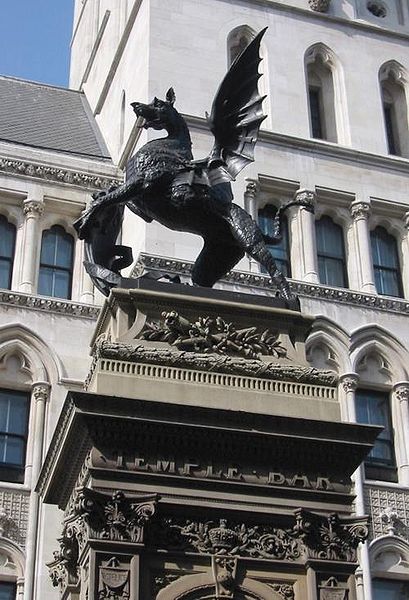The London Coal Exchange was situated on the north side of Thames Street in the City of London, nearly opposite to Old Billingsgate Market, occupying three different structures from 1770 to 1962. The original coal exchange opened in 1770. A second building from 1805 was replaced by a new purpose-built structure constructed from 1847 to 1849, and opened by Prince Albert on 30 October 1849. This third London coal exchange was one of the first substantial buildings constructed from cast iron, built several years before the hall at the Great Exhibition. It was demolished in 1962 to allow widening of what is now Lower Thames Street despite a campaign by the Victorian Society to save the building. Cast iron decorations from the 1849 Coal Exchange building were selected as the model for the dragon boundary mark for the main entrances to the City of London.

James Bunstone Bunning's design model for the Coal Exchange, held by the Royal Institute of British Architects and displayed by the Victoria and Albert Museum.
Interior of the 1805 London Coal Exchange. C.1808
The dragon boundary marks are cast iron statues of dragons on metal or stone plinths that mark the boundaries of the City of London. The dragons are painted silver, with details of their wings and tongue picked out in red. The dragon stands on its left rear leg, with the right rear leg lifted forward to support a shield, with the right foreleg raised and the left foreleg holding the top of the shield. The shield bears the City of London's coat of arms painted in red and white: the red cross of St George on a white background, with a red sword in the first quarter referring to the reputed beheading of Saint Paul. Saint George and Saint Paul are respectively the patron saints of England and of London. The dragon's stance is the equivalent of the rampant heraldic attitude of the supporters of the City's arms, which may allude to the legend of Saint George and the Dragon.
One of the two original statues from the Coal Exchange, relocated to Victoria Embankment
One of the two original 1849 statues from the Coal Exchange
Smaller replica version on High Holborn, 1960s
Dragon at Temple Bar, to a different design by C. B. Birch, 1880






